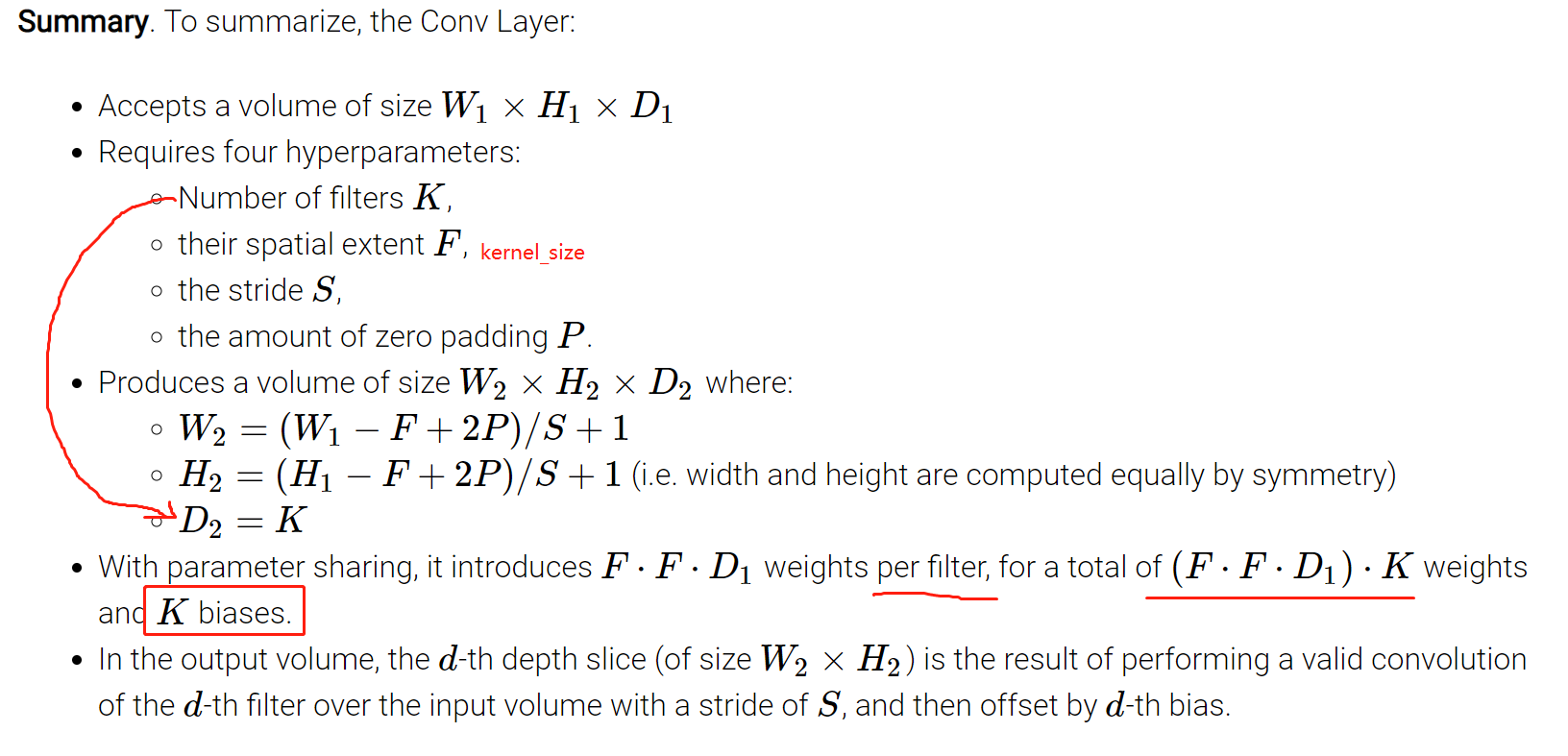1.Image Classification
slides:Image Classification pipeline
linear classification notes
Example:
s=[13,−7,11], first class is the true class (i.e. yi=0)
We get zero loss for this pair because the correct class score (13) was greater than the incorrect class score (-7) by at least the margin 10
正则 Regularization
Prevent the model from doing too well on training data:防止过拟合。
按照上述的SVM Loss公式,满足Loss为0的W有多个,最简单地,如果W0满足,那么 $W_0$ 满足,那么 $\lambda W_0$ 也将满足Loss为0。比如用$W_0$ 算出来的距离是15,那么用$2W_0$ 算出来的就是30,依旧大于margin,所以Loss为0.
所以,为了不让所有 $\lambda W0$ 都满足Loss为0,可以引入一个正则项,比较常使用的L2正则:$R(W) = \sum_k\sum_l W{k,l}^2$ ,即把W矩阵的各个数字平方都加起来也作为Loss的一部分,这样可以确保W的唯一性。所以加上正则后的SVM Loss应该为:
展开后为:
Softmax Loss
SVM 和 Softmax是两大常见的分类器。
SVM: $f(x_i,W)$ 的输出是未经校准且可能难以解释,Use max-margin loss
Softmax:直观输出(归一化类概率)并且还具有概率解释, Use cross-entropy loss
$Li = -\log\left(\frac{e^{f{yi}}}{ \sum_j e^{f_j} }\right) \hspace{0.5in} \text{or equivalently} \hspace{0.5in} L_i = -f{y_i} + \log\sum_j e^{f_j}$
SVM计算的trick,加一个C参数防止e指数后爆炸:
$\frac{e^{f{y_i}}}{\sum_j e^{f_j}} = \frac{Ce^{f{yi}}}{C\sum_j e^{f_j}} = \frac{e^{f{y_i} + \log C}}{\sum_j e^{f_j + \log C}}$
关于C的选择:$\log C = -\max_j f_j$, 使得 加了$C$ 的$f$ 的最大值是0。
SVM vs. Softmax:
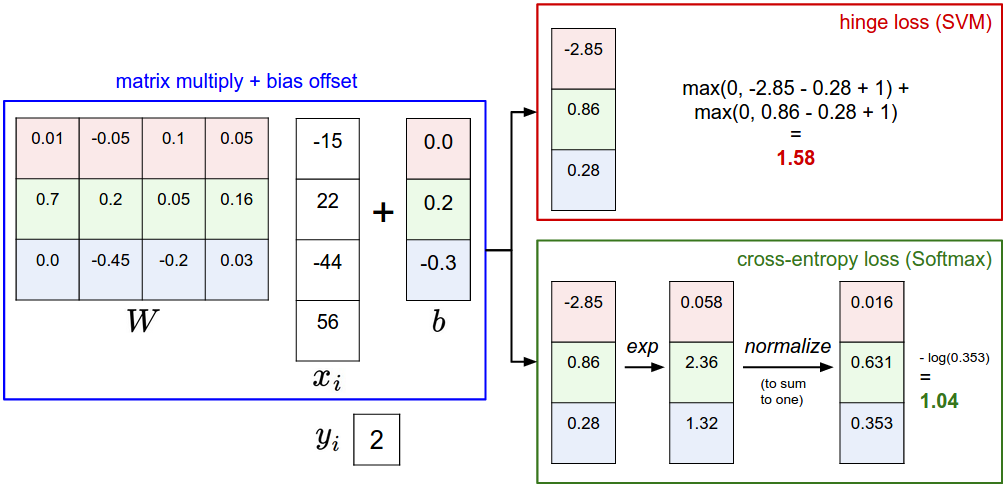
2.Loss Functions and Optimization
slides:Loss Functions and Optimization
Softmax Classifier
- 如果分类器出来的分数大家都差不多相等,那么Softmax的Loss为 $logC$,C是类别数目。
Optimization
- 在多个维度中,梯度是沿每个维度的(偏导数)的向量
optimization notes
Mini-batch gradient descent 批量梯度下降
没必要每张图片计算一个梯度,而是一批图片计算Loss得到一个梯度进行下降。
1
2
3
4
5
6# Vanilla Minibatch Gradient Descent
while True:
data_batch = sample_training_data(data, 256) # sample 256 examples
weights_grad = evaluate_gradient(loss_fun, data_batch, weights)
weights += - step_size * weights_grad # perform parameter updatebatch的大小一般是2的整数次幂,因为矢量化操作实现在输入大小为2的情况下工作得更快。
3.Introduction to Neural Networks
slides: Backpropagation and Neural Networks
Backpropagation 反向传播
- 简单的图示
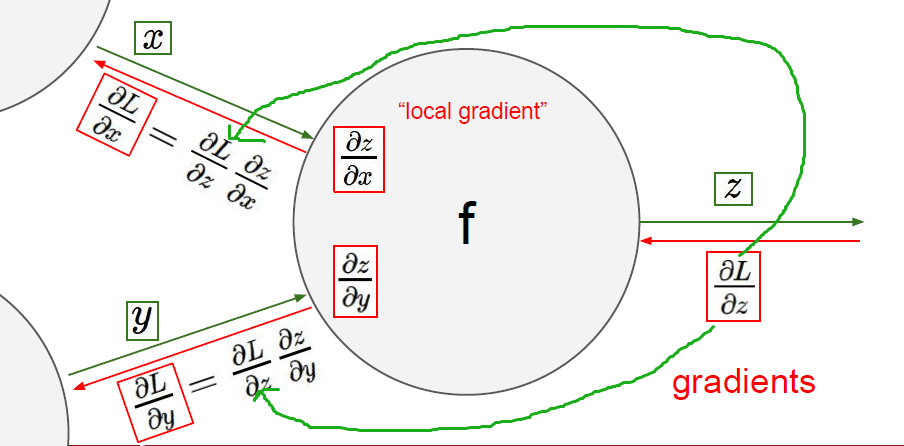
梯度回传模式
加法:梯度都分给两个输入
max: 梯度路由给最大值
乘法:把两个input梯度交换
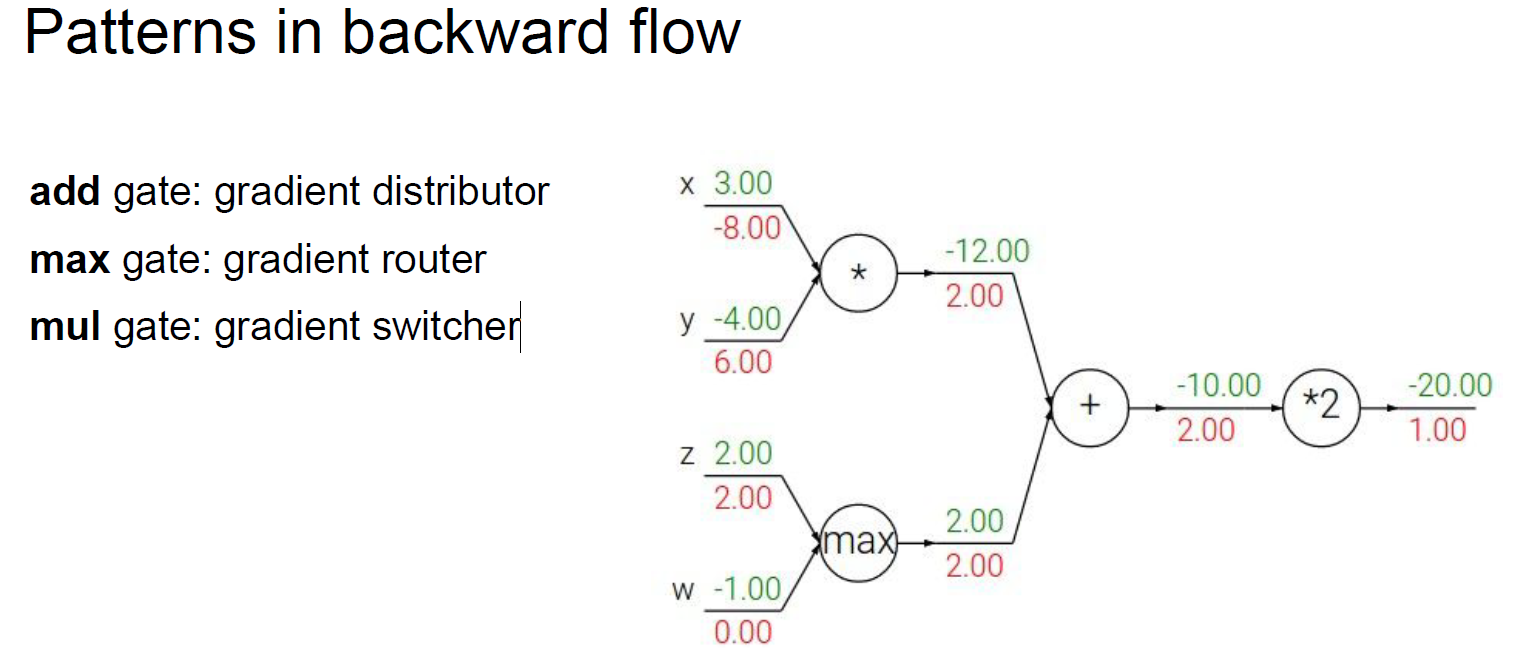
矩阵运算的梯度回传
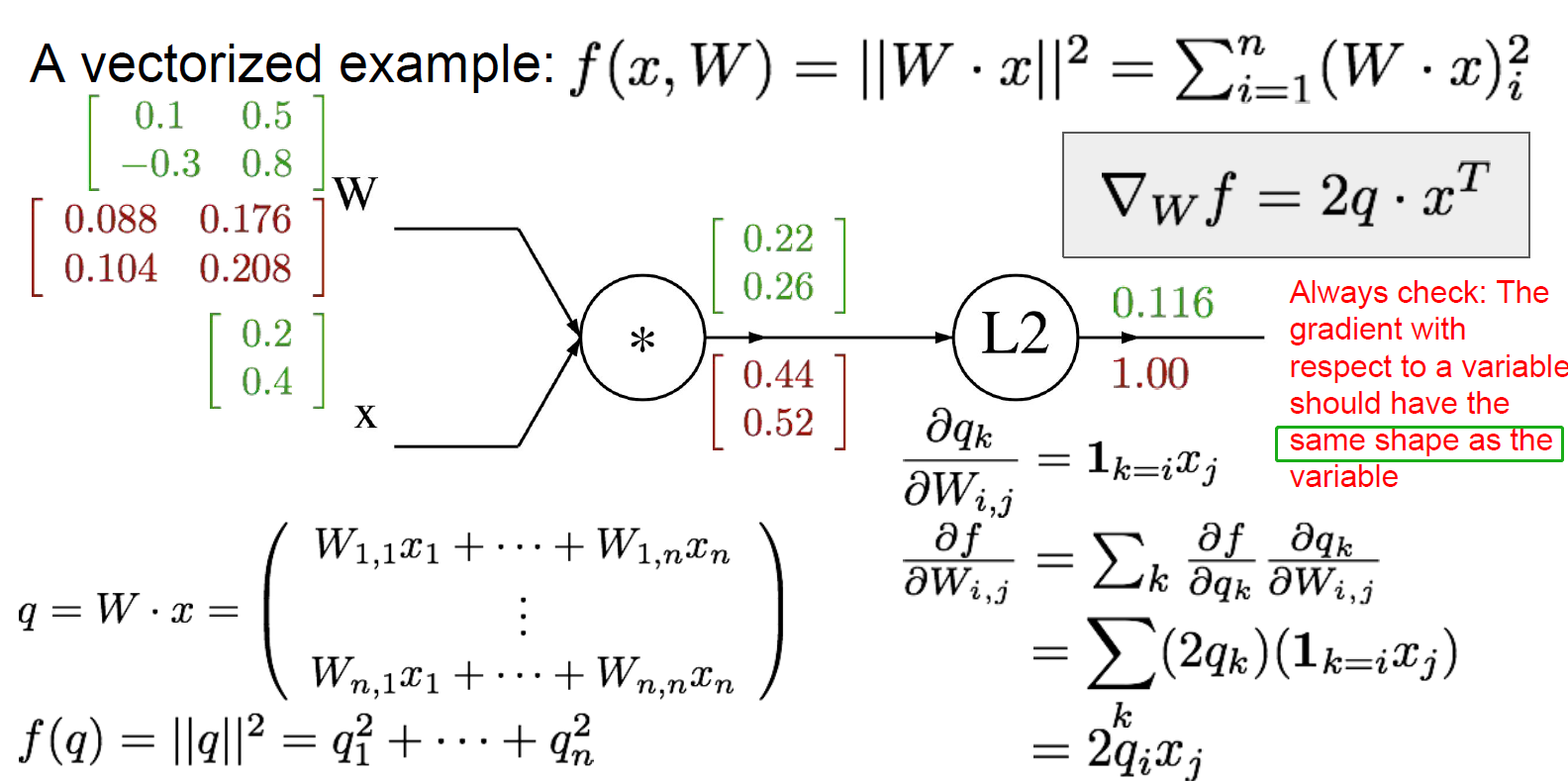
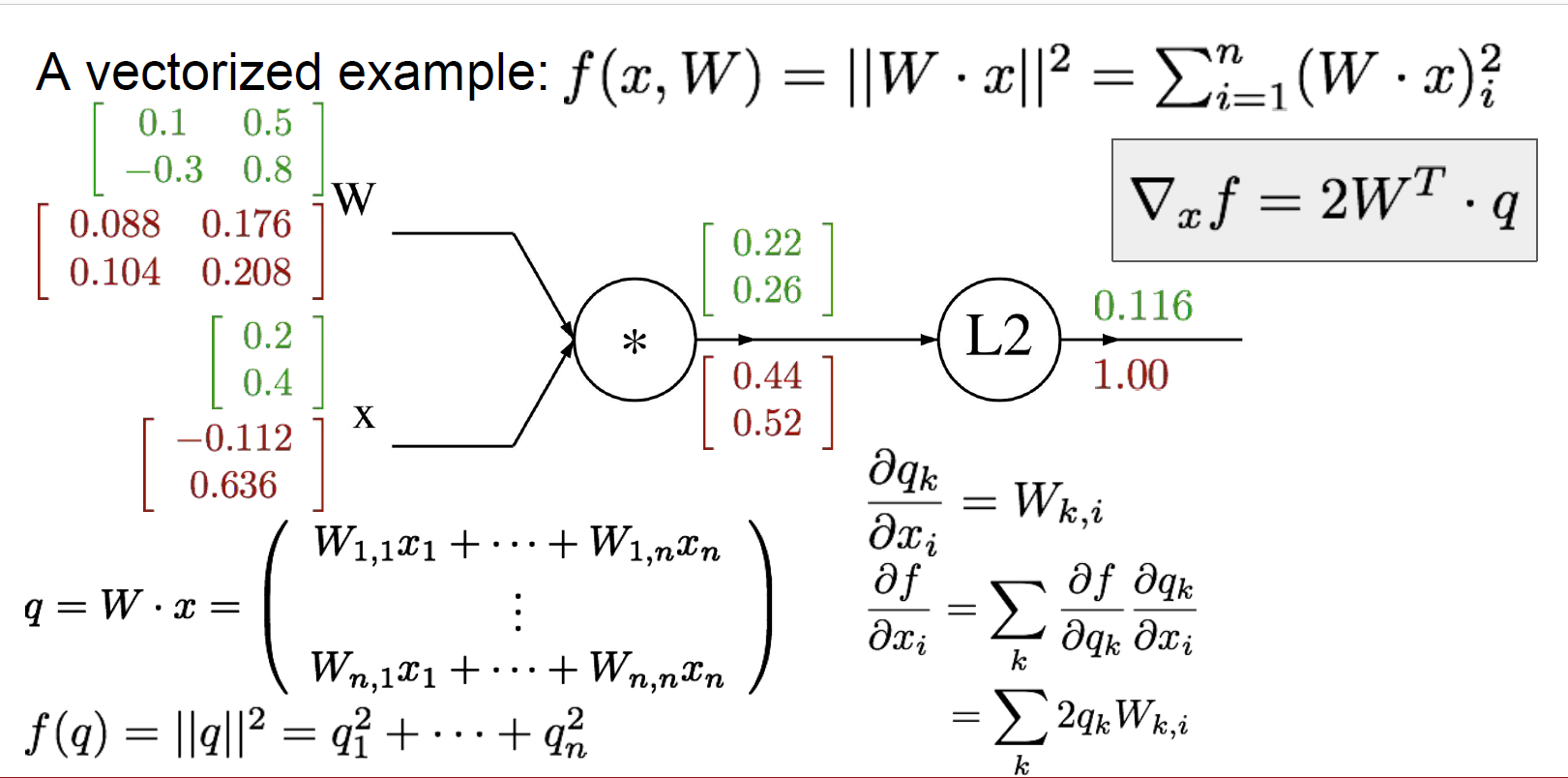
Neural Networks
激活函数
Sigmoid,tanh,ReLU,Leaky ReLU,Maxout,ELU

backprop notes
Problem statement
We are given some function $f(x)$ where $x$ is a vector of inputs and we are interested in computing the gradient of $f$ at $x$ (i.e. $\nabla f(x)$).
sigmoid 导数
4.Backpropagation
slides: Backpropagation and Gradients
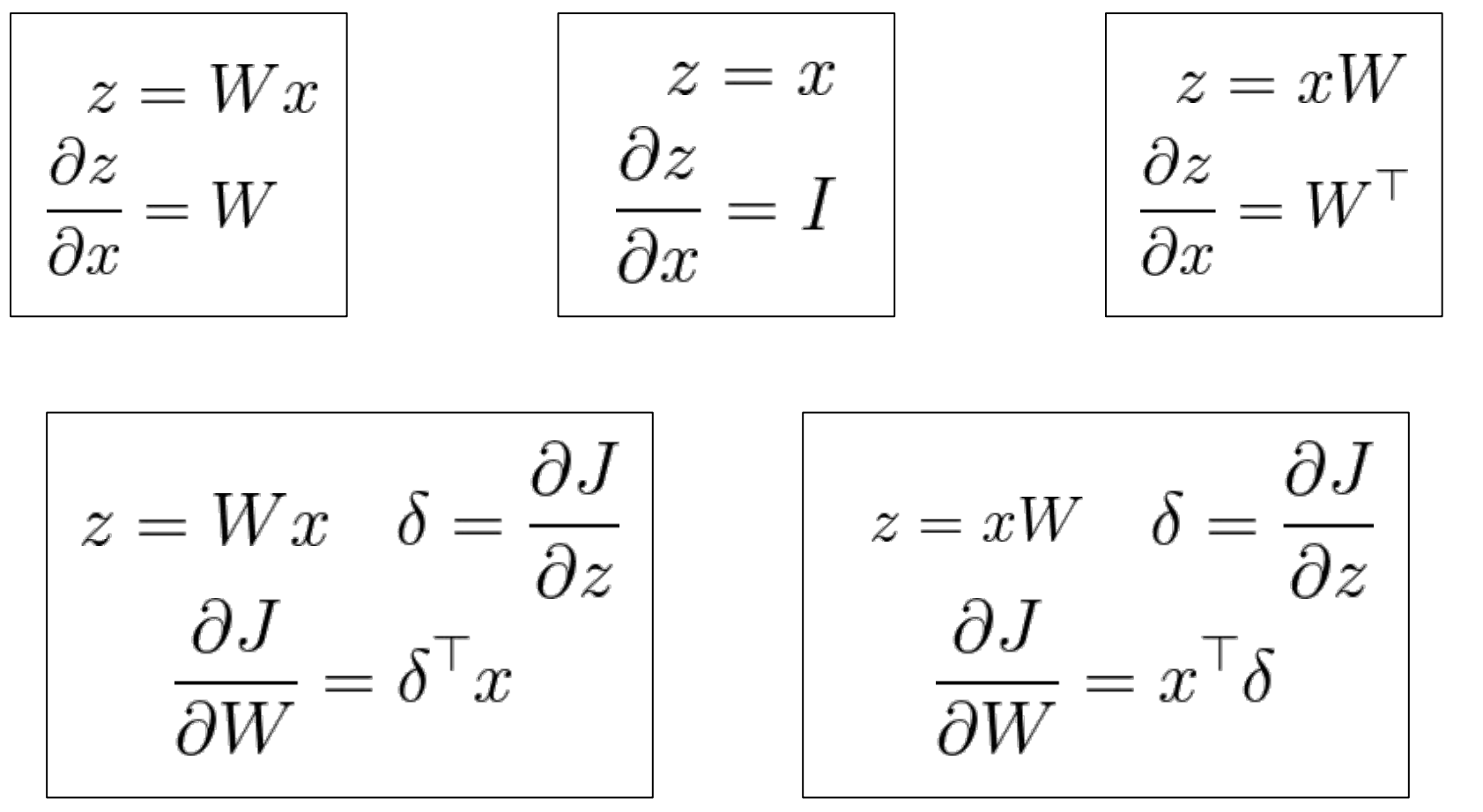
5.Convolutional Neural Networks
slides:Convolutional Neural Networks
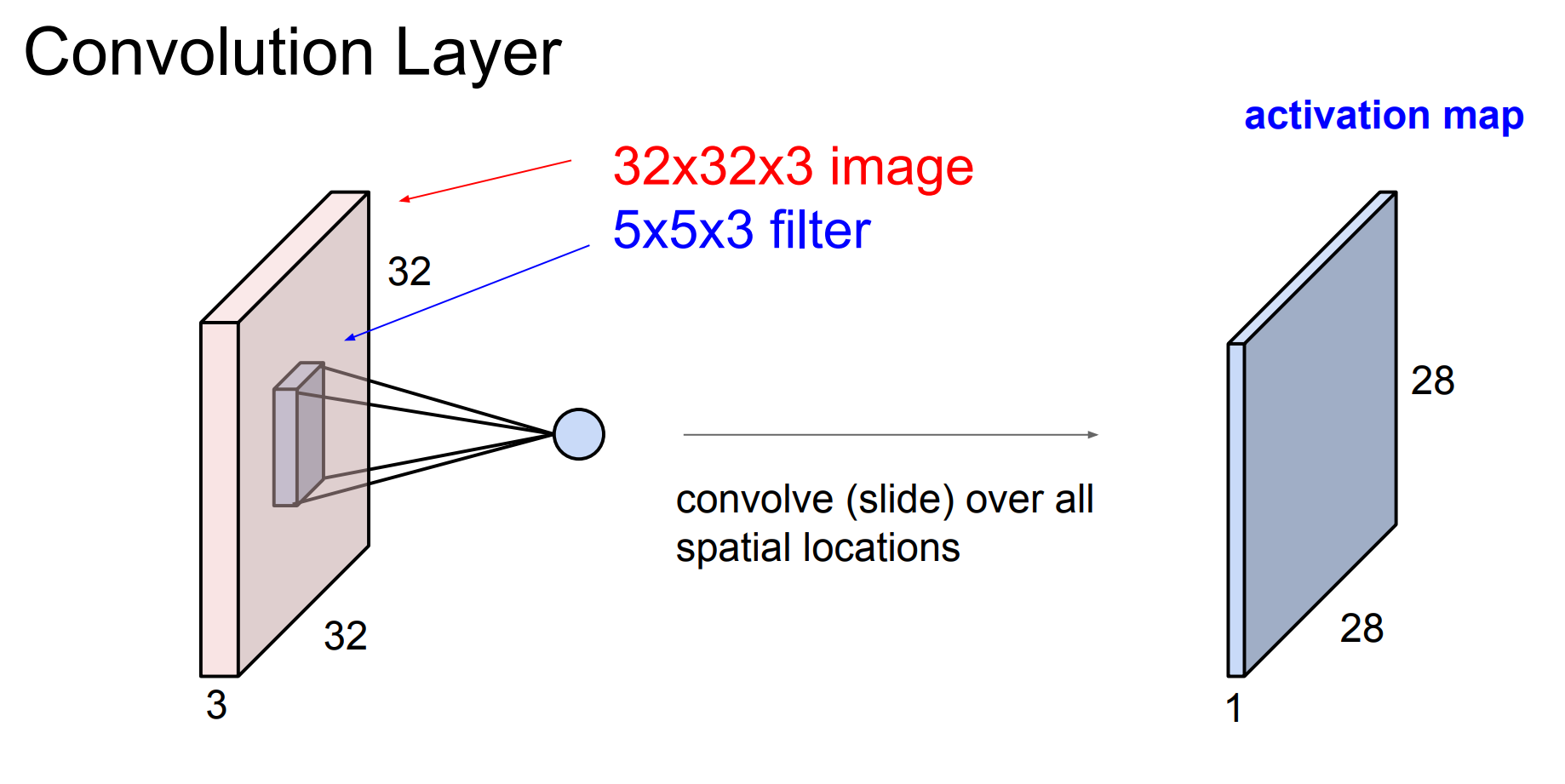
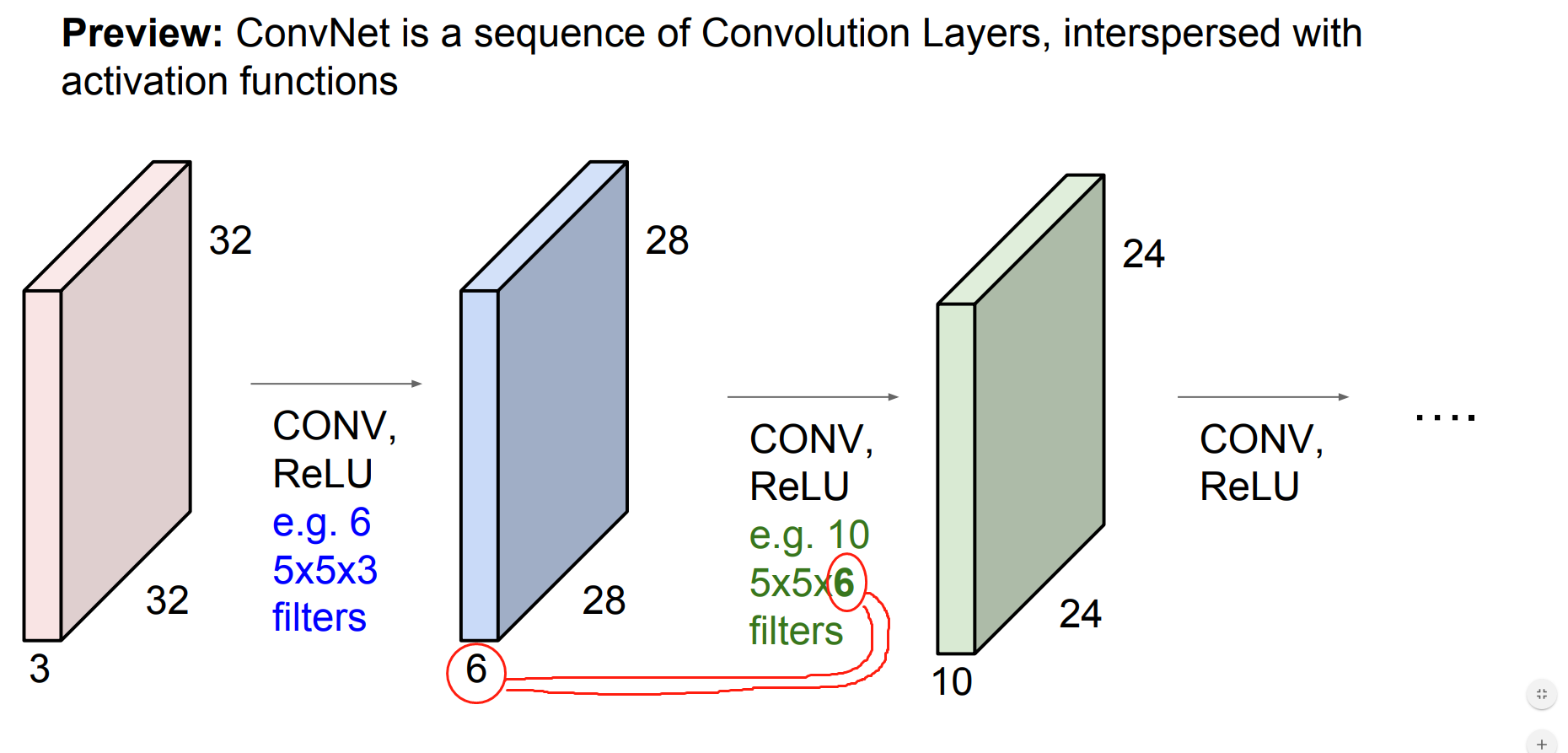

ConvNet notes
